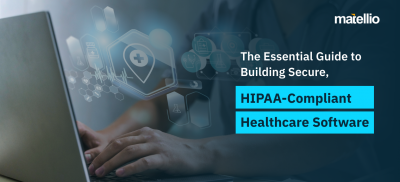
Emergency management software is a specialized tool designed to assist organizations in preparing for, responding to, and recovering from crises. Whether it’s a natural disaster, a medical emergency, or an industrial accident, this software plays a pivotal role in coordinating efforts, managing resources, and ensuring compliance with regulatory standards.
Its importance lies in its ability to save lives, reduce damage, and maintain operational continuity during emergencies. By integrating real-time communication, incident tracking, and resource management, emergency management software ensures that organizations can respond effectively to crises and build resilience for future challenges.
What is Emergency Management Software?
Emergency management software is a digital solution that helps organizations streamline their emergency preparedness and response processes. It provides a centralized platform for managing incidents, tracking resources, and ensuring effective communication during crises.
Core Functionalities
- Incident Tracking: Monitor, document, and manage ongoing crises in real-time.
- Resource Allocation: Efficiently allocate equipment, personnel, and supplies.
- Communication: Provide seamless collaboration through alerts, messaging, and notifications.
- Compliance Management: Ensure adherence to safety regulations and reporting requirements.
- Data Analytics: Analyze post-crisis data for better future preparedness.
This software is a cornerstone of modern crisis management, empowering organizations to handle emergencies with precision and efficiency.
Source:–Skyquest
Key Features of Emergency Management Software
A robust emergency management software solution incorporates a blend of fundamental and advanced features to address diverse needs.
| Core Features | Next-Gen Features |
| Real-Time Alerts and Notifications | AI-Powered Predictive Analytics |
| Incident Reporting and Management | Integration with IoT Devices |
| Resource Tracking and Allocation | Advanced GIS Mapping for Enhanced Visualization |
| Compliance Tracking and Reporting | Automated Workflow Management |
| Multi-Channel Communication | Machine Learning for Risk Assessment |
| Role-Based Access Control | Cloud-Based Accessibility |
These features ensure that the software remains functional in diverse crisis scenarios while integrating cutting-edge technologies for better outcomes.
Benefits of Emergency Management Software
Investing in emergency management software equips organizations with essential tools to enhance crisis preparedness, improve response times, and ensure operational continuity. Here’s how it helps:
1. Enhanced Preparedness
Emergency management software enables organizations to plan and simulate various crisis scenarios effectively. It helps identify potential risks, prepare contingency plans, and ensure all stakeholders understand their roles during emergencies. By using emergency management software solutions, businesses can create dynamic training modules and virtual drills for increased readiness.
2. Faster Response Times
During crises, swift decision-making and rapid response are crucial. Emergency management systems centralize communication, ensuring that real-time alerts, task assignments, and updates are instantly accessible to all team members. This minimizes delays in response and improves the coordination needed to protect lives and assets.
3. Efficient Resource Utilization
Optimizing the allocation of personnel, equipment, and supplies is key during emergencies. Emergency management systems provide real-time resource tracking and allocation capabilities, ensuring no critical resource is underused or overburdened. This leads to effective deployment and better overall management of available assets.
4. Improved Collaboration
Emergencies often require seamless coordination between internal teams and external agencies. Using emergency management software systems, organizations can foster better collaboration through shared dashboards, live updates, and integrated communication tools. These systems ensure alignment across all departments and partners during critical moments.
Read More: Unlock the potential of AI in emergency medicine to revolutionize critical care with faster diagnostics, predictive insights, and life-saving innovations.
5. Regulatory Compliance
Adhering to safety standards and regulations is non-negotiable for industries like healthcare, logistics, and manufacturing. Emergency software automates compliance tracking by maintaining accurate records, ensuring protocols are followed, and creating audit-ready documentation. This reduces risks of penalties and enhances adherence to guidelines like FEMA, OSHA, or industry-specific regulations.
6. Data-Driven Insights
Analyzing data from past crises is vital for refining future response strategies. Emergency management software solutions provide analytics tools that collect data during incidents, enabling detailed post-event evaluations. Businesses can use these insights to identify areas for improvement, build stronger plans, and mitigate risks more effectively.
7. Cost Savings
Operational downtime, resource wastage, and recovery expenses can strain an organization during emergencies. With the help of digital transformation services integrated into emergency software, businesses can streamline crisis response efforts, reduce delays, and avoid unnecessary expenditures. This protects financial resources while safeguarding personnel and infrastructure.
Struggling with Legacy Systems? Develop Modern Software & Gain Efficiency. Implementing emergency management software requires a systematic and strategic approach to ensure the software aligns with your organizational goals and provides effective solutions during emergencies. Below is a detailed guide to the process: Read More: Learn how incident management software can enhance your emergency preparedness strategy by exploring our blog. Emergency management software is a powerful solution designed to address the unique challenges faced by various industries. Its adaptability allows organizations to ensure safety, efficiency, and coordinated responses during emergencies. Below is a detailed look at its applications across key sectors: The healthcare industry faces significant challenges during emergencies, and emergency management software development ensures streamlined responses. Government agencies rely on emergency management solutions to manage large-scale disasters and provide effective relief operations. Educational institutions prioritize the safety of students and staff, and emergency software plays a vital role in managing crises. For businesses, ensuring employee safety and operational continuity is paramount. Emergency management software solutions offer tools to handle crises efficiently. The transportation sector deals with emergencies that affect passengers, logistics, and infrastructure. Traffic Management Software Development plays a crucial role in ensuring safety and continuity. Struggling with Legacy Systems? Develop Modern Software & Gain Efficiency. Emergency management software addresses numerous challenges organizations face during crises by enhancing coordination, streamlining operations, and improving overall response strategies. Here’s a detailed look at the key challenges and how these solutions resolve them effectively. Challenge: Disconnected communication systems create delays and miscommunication, especially when multiple departments or external agencies are involved in a crisis. This fragmentation can lead to confusion and slower responses. Solution: Emergency management software systems provide centralized platforms for real-time communication. These systems unify messaging, alerts, and updates across teams and stakeholders, ensuring smooth coordination and significantly reducing delays. Emergency communication software development plays a crucial role in creating these platforms, enabling seamless integration of tools and functionalities tailored to crisis response needs. Challenge: During emergencies, ineffective allocation of personnel, equipment, and supplies can lead to resource wastage, operational inefficiencies, and delayed response times. Solution: With emergency management solutions, organizations gain real-time visibility into resource availability and location. This functionality enables precise allocation, ensuring critical areas receive the necessary resources promptly while minimizing waste and redundancy. Challenge: Manual workflows and limited real-time updates often result in delayed decision-making and action during emergencies, escalating the severity of the crisis. Solution: Emergency software automates workflows, streamlining processes like task assignments and status updates. Real-time data and predefined action plans ensure faster decision-making, enabling teams to act quickly and efficiently. Challenge: Keeping track of and adhering to safety standards and regulatory requirements during crises is challenging, especially when resources are stretched thin. Solution: Emergency management software solutions automate compliance tracking, ensuring organizations adhere to industry-specific regulations. This feature minimizes the risk of non-compliance penalties and ensures safety standards are upheld during emergencies. Challenge: A lack of comprehensive real-time data during an emergency hampers decision-making, leading to poorly directed efforts and delayed responses. Solution: Emergency management systems leverage tools like GIS mapping and live data analytics to provide a holistic view of the crisis. This enhanced situational awareness allows decision-makers to identify critical areas, allocate resources effectively, and take targeted actions to mitigate risks. Challenge: Reviewing the effectiveness of crisis management efforts is difficult without structured reporting and analytics. This gap prevents organizations from learning and improving future responses. Solution: Emergency management software integrates advanced analytics tools to generate detailed post-crisis reports. These insights enable organizations to evaluate their response strategies, identify areas for improvement, and refine their plans for better preparedness in future emergencies. Read More: Explore how Crisis Management Software Development empowers businesses to effectively handle emergencies and ensure seamless operations. Challenge: Integrating data from various departments and systems into a cohesive emergency response plan is complex and time-consuming. Solution: Leveraging cloud integration services, emergency management platforms seamlessly pull data from multiple sources into a unified system. This integration ensures smooth data flow, real-time updates, and a comprehensive approach to emergency management. Emergency management software is evolving rapidly, incorporating advanced technologies to enhance preparedness, streamline responses, and ensure effective recovery. Here are the key trends driving the future of this critical technology: Artificial Intelligence is becoming integral to emergency management software, empowering organizations with real-time predictive analytics. By analyzing historical data and live inputs, AI identifies patterns, anticipates crises, and provides actionable insights for proactive decision-making. The inclusion of AI integration services ensures organizations can leverage intelligent systems to optimize response strategies and reduce risks. Cloud technology is redefining the scalability and accessibility of emergency management software. These platforms enable remote collaboration and centralized data management, ensuring teams can coordinate seamlessly across different locations. Cloud-based emergency management software solutions also enhance data security and provide scalable resources to manage crisis situations effectively, making them indispensable for modern organizations. Mobile optimization has become essential for emergency software, allowing users to access critical information through smartphones and tablets. Mobile-first emergency management systems offer real-time updates, flexible communication, and the ability to manage crises from any location. This mobility is particularly valuable for on-ground teams requiring immediate access to actionable data. The adoption of Internet of Things (IoT) technology is transforming emergency management by providing real-time data through connected devices. IoT-enabled sensors and devices monitor environmental factors like temperature, humidity, and structural stability during emergencies. With IoT integration services, emergency management systems can achieve seamless connectivity, enhancing situational awareness and enabling quicker responses to critical events. As emergency management relies more on digital platforms, robust cybersecurity measures are critical. Advanced encryption, multi-factor authentication, and continuous threat monitoring protect sensitive data and maintain system integrity during crises. Modern emergency management software systems prioritize safeguarding information from cyber threats, ensuring uninterrupted operations even during emergencies. As emergency management relies more on digital platforms, robust cybersecurity measures are critical. Advanced encryption, multi-factor authentication, and continuous threat monitoring protect sensitive data and maintain system integrity during crises. Modern emergency management software systems prioritize safeguarding information from cyber threats, ensuring uninterrupted operations even during emergencies. Explore the Latest Trends Shaping Emergency Management Software! Investing in emergency management software development goes beyond crisis preparedness; it’s about building resilience, saving lives, and minimizing operational disruptions during emergencies. A robust solution enables you to centralize communication, coordinate resources, and respond efficiently to crises, ensuring business continuity and compliance with safety standards. Partnering with experts like us ensures you receive a tailored emergency management solution designed to address your unique challenges. We specialize in creating advanced software systems that empower organizations to manage emergencies with precision and confidence. We also offer technology consulting services to guide you in selecting the right tech stack, system integrations, and customizations for your emergency management software. From initial consultation to development, testing, deployment, and ongoing support, we deliver end-to-end solutions that ensure seamless operations and long-term scalability—all under one roof. If you’re ready to enhance your organization’s emergency preparedness and response capabilities, connect with our experts today by filling out the form and scheduling a consultation. We implement advanced encryption techniques and strict access controls to secure sensitive data during emergencies. Regular audits and penetration testing ensure the system remains resilient against potential threats. Yes, our emergency management software is tailored to meet the needs of various industries, including healthcare, government, education, and corporate sectors. Custom modules and workflows are designed to address specific operational requirements. The timeline depends on the project's scope, complexity, and required integrations. After understanding your needs, we provide a detailed project roadmap and ensure timely delivery. We offer comprehensive post-launch support, including bug fixes, performance optimization, feature updates, and ongoing technical assistance. Flexible maintenance plans ensure your software remains updated and reliable. Costs vary based on factors such as feature complexity, integrations, and scalability requirements. We provide transparent estimates tailored to your budget and goals, ensuring a high-quality solution that meets your expectations.Steps to Implement Emergency Management Software
1. Requirement Analysis
2. Software Selection
3. Customization
4. Testing and Simulation
5. Deployment
6. Training and Support
Use Cases of Emergency Management Software
 Healthcare Sector
Healthcare Sector
 Government Agencies
Government Agencies
 Education Sector
Education Sector
 Corporate Sector
Corporate Sector
 Transportation Industry
Transportation Industry
Challenges Solved by Emergency Management Software
Fragmented Communication Channels
Resource Mismanagement
Slow Response Times
Compliance Complexities
Limited Situational Awareness
Post-Crisis Analysis Gaps
Data Integration Challenges
Future Trends in Emergency Management Software
 AI-Driven Decision-Making
AI-Driven Decision-Making Cloud-Based Platforms
Cloud-Based Platforms Mobile-First Solutions
Mobile-First Solutions Integration with IoT
Integration with IoT Enhanced Cybersecurity
Enhanced CybersecurityHow Can We Help with Emergency Management Software Development?
Our Expertise Includes:
Emergency Management Software – FAQ’s
Q1. How do you ensure the security and privacy of data in emergency management software?
Q2. Are emergency management solutions customizable for specific industries?
Q3. What is the estimated timeline for developing emergency management software?
Q4. What support and maintenance services do you offer post-launch?
Q5. What are the projected costs for developing emergency management software?




